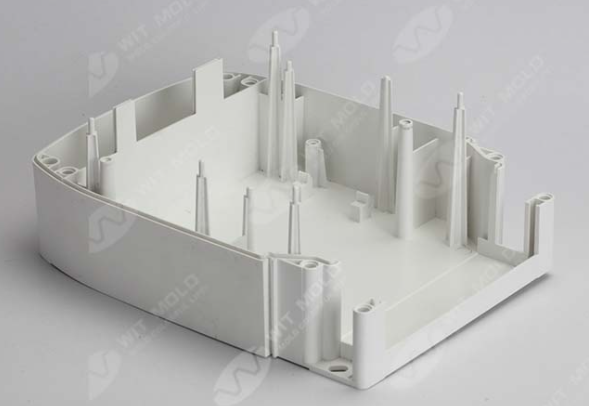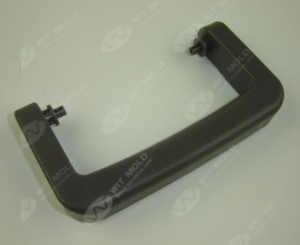Designing a plastic part for manufacturability involves many important factors that touch on all areas of part design, tooling, material selection and production.Before you try to produce parts by custom plastic molds, please consider the following points:
1. Material considerations
Materials are usually specified early in the design process and shall be mutually agreed by both parties.Plastic selection is a complex task involving many considerations, such as:
Temperature: thermal stress that may occur under normal and extreme service conditions and during assembly, finishing and transportation.
Chemical resistance: the effect that occurs when any solid, liquid or gas comes into contact with the component.
Agency approval: government and private sector performance standards for heat resistance, flammability, electrical and mechanical properties.
Assembly: the combination of plastics with all assembly steps, such as bonding, mechanical fasteners and welding.
Finish: the ability of the material to produce the desired finish, such as gloss, smoothness and other appearance values, as it comes from the mold.
Cost: resin pricing and costing of manufacturing, maintenance, assembly and disassembly to reduce labor, tools, finishing and other costs.
Availability: availability of resin in the quantity required for production.
2. Radius
Radius should always be a consideration of part thickness - eliminating high stress areas and the possibility of possible damage to the part. The general rule of thumb is that the thickness at the corner should be between 0.9 times the nominal thickness of the part and 1.2 times the nominal thickness of the part.
3. Wall thickness
Designing parts to keep the wall thickness consistent helps to avoid many part defects that may occur in the manufacturing process. When the plastic melts, it flows to the leas resistance region. If the overall thickness of your part is inconsistent, the melt may flow into the thicker area first (depending on the gate position). When this happens, thin areas may not fill correctly. In addition, thicker areas tend to cool more slowly and there is a risk of voids or sinking defects. Designing a part with rounded corners will also help to fill the part correctly during the forming process.
4. Gate location
Ideally, the gate location should be specified by the designer, shaper and tool manufacturer. Gate location is critical to almost all properties of injection molded parts. It affects appearance, warpage, tolerance, surface finish, wall thickness, molding stress and physical properties, to name a few.
Some designers use mold flow simulation to determine gate design and location. I think it would be great if the molders agreed to their proposal. I don't agree with designers who insist on their door suggestions and must remain uncompromising. In either case, close cooperation with the molder throughout the design cycle will ensure that the gate will not adversely affect the performance, appearance or fit of the part. The shaper is also willing to provide the designer with suggestions on the gate type and features that may have to be added to the part geometry according to the gate design. The shaper will also make trade-offs between different types of gates, including fan gate, edge gate or straight gate.
5. Draft
Pullout modulus is the taper on the vertical wall of plastic parts. If there is no draft, the part may not be ejected from the mold or may be damaged during ejection. Typically, a draft angle between 1 ° and 2 ° is required, but may vary depending on part limitations and specifications.
6. Including ribs
Plastic parts designed to have a minimum wall thickness will not be as strong as thicker parts - which is why it may be necessary to include stiffeners to help enhance the strength of the parts. Depending on the material used, the thickness of the rib should be between 50% and 70% of the relative part thickness to avoid shrinkage marks. To avoid sinking, the designer may excavate material to reduce the risk of defects.
7. Shrinkage mark
Experienced designers always face the challenge of avoiding shrinkage marks of injection molded parts. Although the recommended maximum wall thickness at the bottom of the stiffener or boss should be less than 60% of the vertical wall, some formers prefer 50% or less. Decorative surface defects depend on gate location, tool quality, nominal wall thickness, material, additives, surface finish, color and viewing angle. Before making any of these decisions, production problems can be avoided by clearly determining the acceptable surface quality with the shaper. Reputable molders will provide honest expectations and backup plans before production begins. The shaper may recommend the elimination of all features inside the part, while others may recommend the use of special coring techniques.
8. Steel safe areas
When we are designing injection molded parts, we’re often faced with details requiring tight tolerances such as snap fits, alignment features or interlocking parts. It’s easy to perfectly align and match these features in CAD, but it’s not that easy to repeatedly produce them during production. Details that cannot be confidently reproduced by a molder are often designed “steel safe.” For the benefit of those not familiar with the term, steel safe means the design feature is detailed with enough clearance to allow a tool maker to easily machine away steel in the mold to tighten up the clearances after initial test shots are molded. Most molders prefer these precautionary measures to avoid welding material back into the mold, which is then later machined.
WHY CHOOSE US?
1.Competitive Price
Build your molds excellently, with savings of overall cost, time, and energy up to 30%!
2.Reliable Quality
Integrated Quality Management system; 16 detailed and specific standards from RFQ to delivery to control of good quality.
3.Experienced Team
Experienced project managers, designers and workers.
4.On-time Delivery
More than 97% of molds can be shipped on time.
5.Proficiency Communication
Well-trained staff will support you efficiently from RFQ to shipment.
WIT MOLD has become one of the best molds in the industry because we combine the essence of the latest technology with proven traditional methods.


